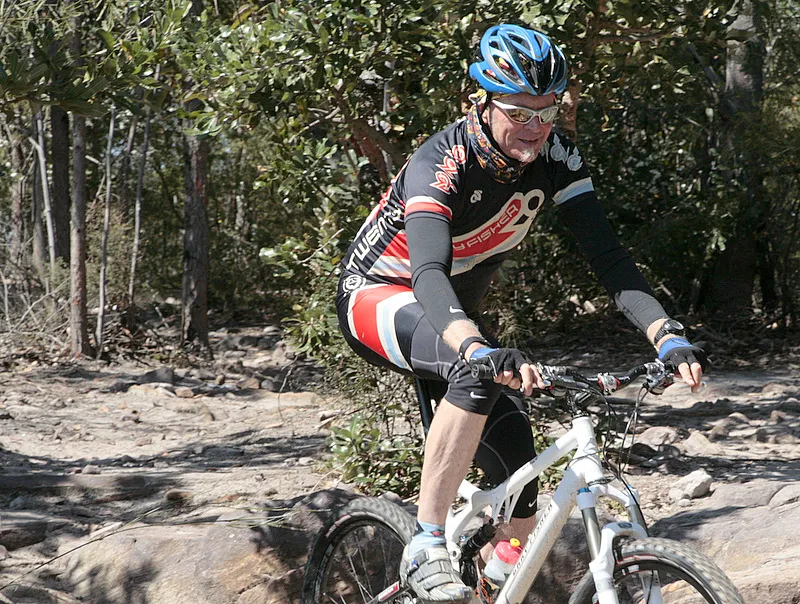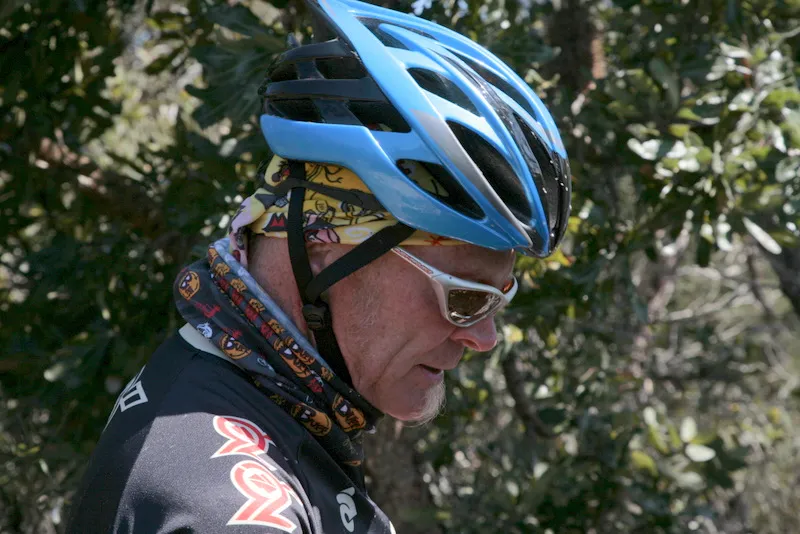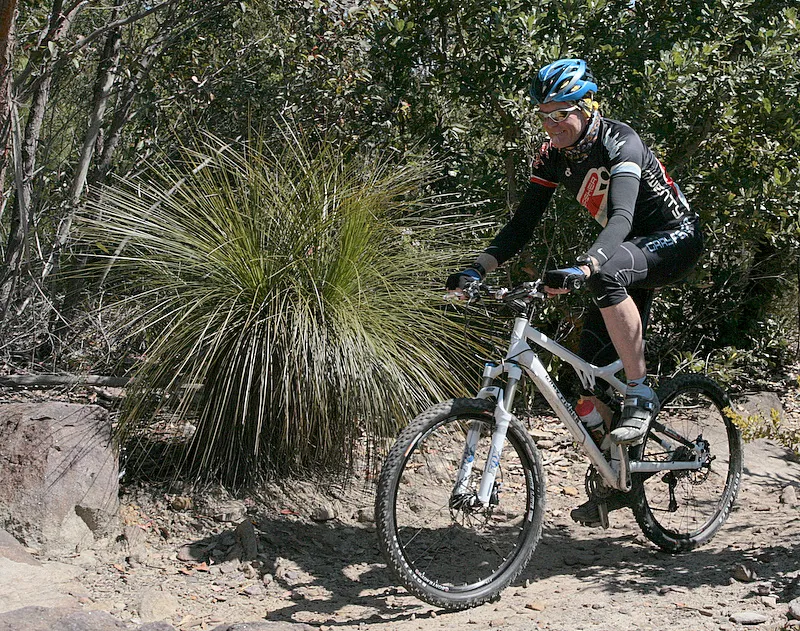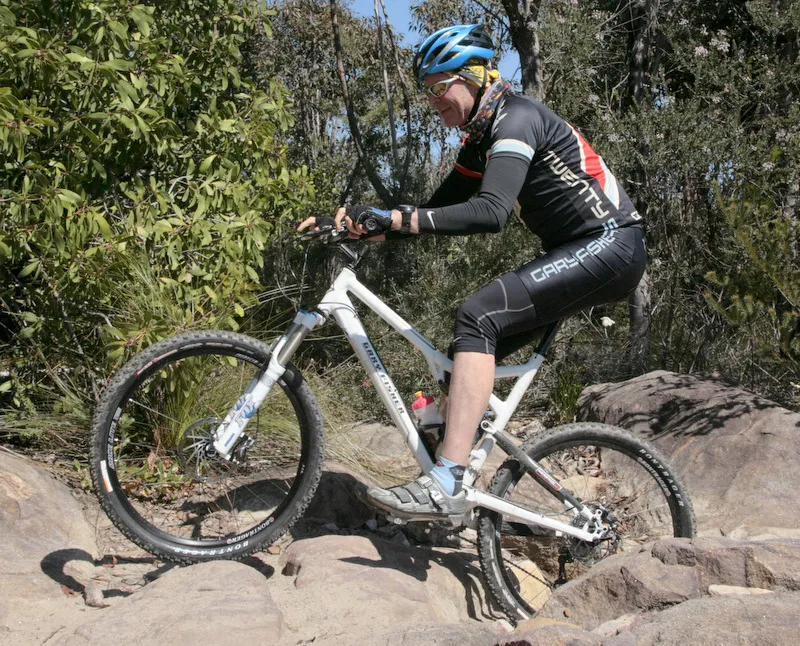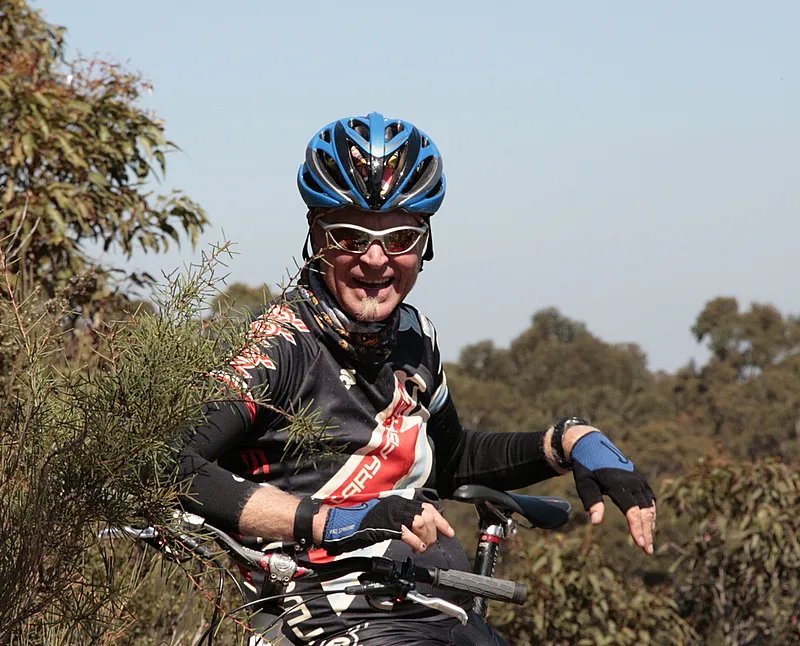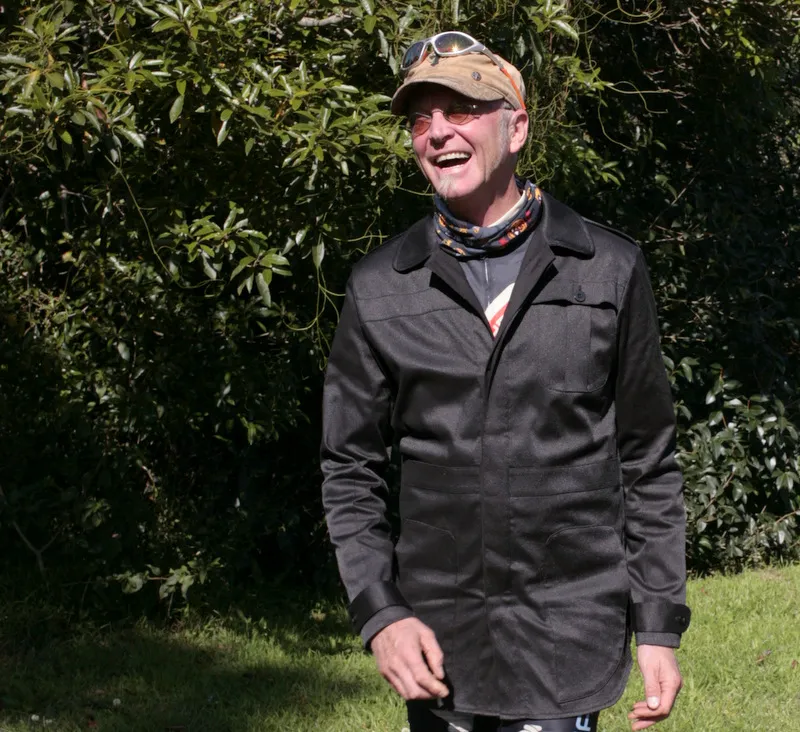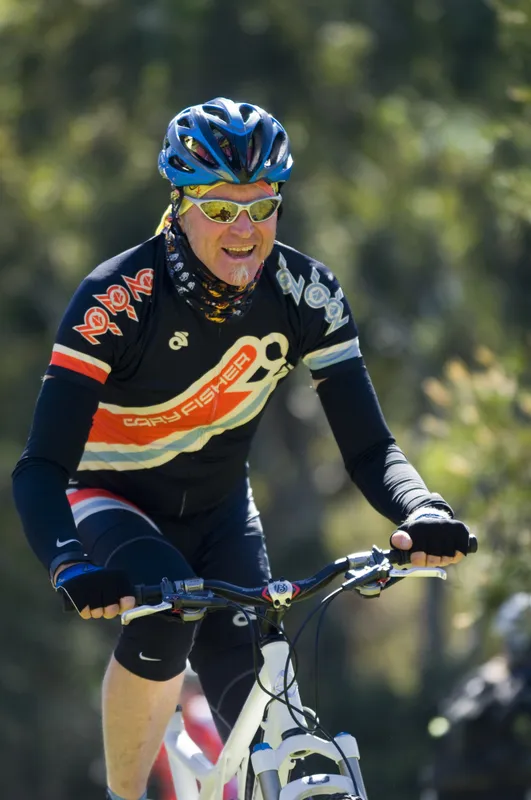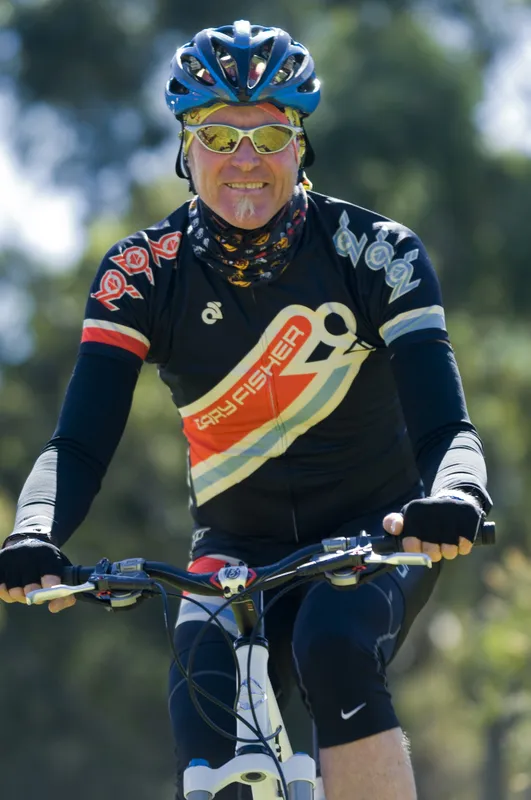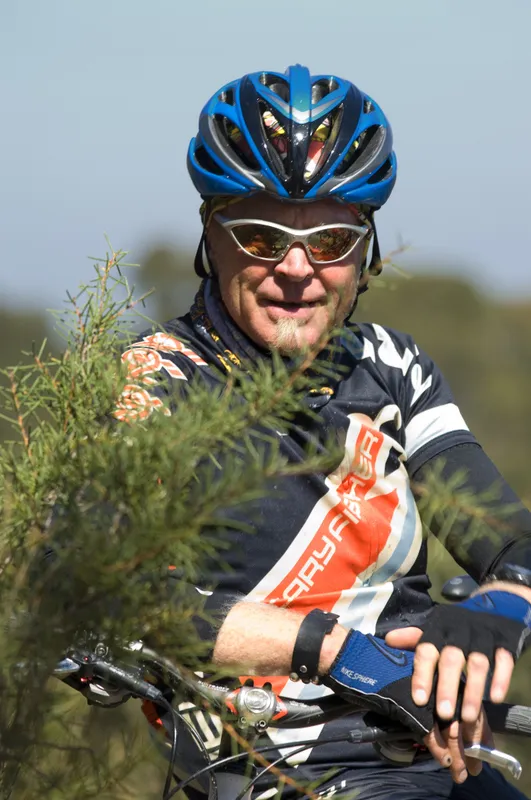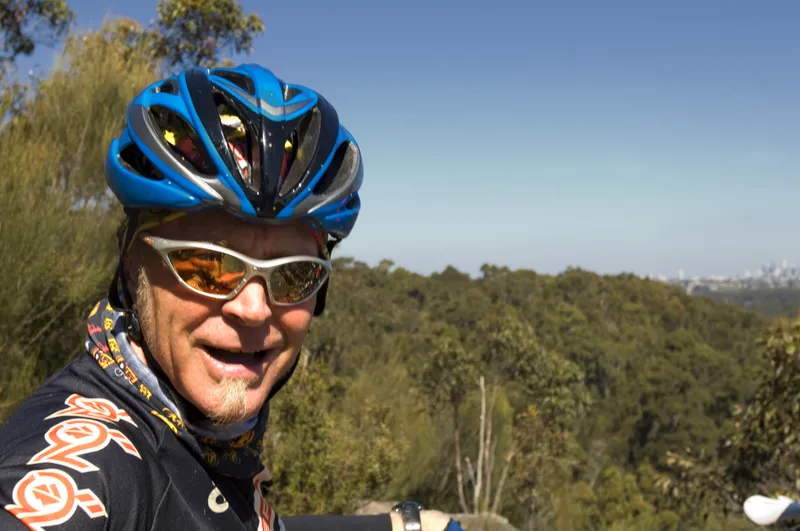Where is mountain bike design going next? One of mountain biking’s founding fathers, Gary Fisher thinks that there are still a lot of technical problems to solve, despite over 30-odd years of development between the early Marin Country klunkers and his latest Roscoe trail bike.
Gary Fisher was in Sydney, Australia to spread the Fisher word to the Trek empire’s dealers. But as a man whose life revolves around bikes and riding them, Gary Fisher wouldn’t be Gary Fisher if he didn’t squeeze in some saddle time between transpacific flights and spruiking his bikes.
Photographer Matt Overington and I, along with pretty much every other local bike media figure and anyone from Trek Bicycles Australia who could find an excuse to be there, joined Gary for a quick blatt round Manly Dam Reserve. This bushland area in Sydney’s North is famed for its short but intense loop of mountain bike trails.
Gary’s in startlingly good shape for a guy who’s closing on 60. His generation of riders was more into riding down mountains than off them, though, so it reassuring to see him taking the b-lines on Manly Dam’s gnarlier technical sections.
He’s still excited about bikes and riding, and about the keynote of his 2009 range, the Roscoe. At one point in the ride he’s heard to say that when he gets off a Roscoe onto the shorter-travel Hi-Fi Roscoe “makes Hi-Fi feel like it doesn’t work!”
With that bike in the bag and getting a big thumbs up from experts like What Mountain Bike’s Steve Worland who called it “probably the perfect UK trail centre bike”, what we wanted to know when we sat down with Gary after lunch was: what’s next?
“There’s already a lot of stuff in the hopper, a lot of desire,” says Fisher. “There’s a lot more that can be done.”
Fisher was one of the first people to graft derailleur gears to cruiser bikes, and along with handlebar mounted shifters, that innovation birthed the modern mountain bike. The inadequacies of gear systems still annoy him.
“Shifting systems are too finicky, too delicate,” he says. “As evidenced by singlespeeds.
“Okay, a singlespeed is simple, it makes you a better rider to ride one. But I think a lot of what drives the singlespeed market is that derailleurs are expensive to maintain.”
“I complain to Shimano, SRAM, ‘What can you do to make this stuff more robust?’ ”
The problem is that derailleurs were never intended to be used in the muck and mud of mountain biking, and even today, they are little more than adapted road components.
“The derailleur systems we have work great on the road,” says Fisher, “but off road especially when you get into filthy, muddy conditions, man, it’s expensive to keep that going. A lot of [mountain bike transmission design] has been based on having a race team and a full time mechanic.”
Nevertheless, there’s a road shifting development that Fisher is watching very closely.
“The notion of electronics and electric shifting, that’s coming along,” he says. “I want to be the first guy to hack one of those new Shimano Dura-Ace [electric] derailleurs!
“There’s this European Shimano stuff called S-Mover equipment group and it’s all automatic shifting. They make an 8-speed and a 24-speed and it’s pretty amazing. They haven’t perfected it yet, but I can see that happening, true automatic shifting: you come round the corner, you’re supposed to be in another gear and it does it for you.”
But the challenge is always making it reliable, and there are situations where simplicity is everything.
“You go to anywhere in the third world and a mountain bike is reduced to a brakeless one-speed bike pretty quick because the cables get kinked and nobody has replacement cables. There they like to use rod brakes because anybody with a welder can fix it. So I am thinking how about a rod derailleur system?”
“One thing that’s for sure is that there is no one bike.”
Lance & the call of the race
Before Fisher was a mountain bike builder and designer, he was a racer. As chronicled in the movie Klunkerz, Fisher was one of the top US road racers. He credits the US national road coach with inspiring him to start a mountain bike company, telling him that he was too old and washed up to make a serious go of racing!
Fisher admits he wasn’t in the league of the very top riders. “I was a very good racer but I didn’t do what I needed to do and that was to go to Europe and be in a team,” he says. “If I’d done that I’d have been a good racer and I’d have been a domestique, maybe I’d have won one or two races.”
What, then, does Gary Fisher the racer think of Lance Armstrong’s return to the pro road peloton?
“I can totally relate to the fever,” says Fisher. “It’s fun to ride a bike; it’s really fun to race.
“At times you feel the pain but you talk to Hincapie and some of these guys about the issue of pain and you go to a place in your mind where you turn that pain into just a sensation. Then you don’t really feel it as pain.”
For Fisher, that sheer in-the-moment intensity of racing is what it’s all about. He describes it as “this visceral life where … you become more of an animal. You never want to go back” to the straight world.
“Face it, this society, our society, this last two hundred years, I think we’re way too much in our heads; we need to get back in our bodies.”
And Lance Armstrong is the greatest example of someone whose value is in his physical abilities.
“You take Lance, he’s been off in these head trips in the last few years,” says Fisher. “The Hollywood starlet thing, working at fund-raising and all that. The funny thing is that when he’s being an athlete and being into his body he makes more of an effect with those people who are still in their heads. He recognizes ‘I’m slipping from what people really appreciate me for.’
“Lance is not that well understood. People think “Oh he’s gotta be a Republican” but he’s more complicated than that. He doesn’t find it necessary to expose all his layers.”
Fisher is aimiably envious of Armstrong’s return and is confident that, “the fundamental reason he’s come back is that, man it feels good. If I was a bit younger and a bit more talented I’d be right there. There’s nothing more I like to do than to race a race.”
Party in the woods
Today, though, Fisher has been riding rather than racing. Improvements in mountain bike technology may have made what we’ve been doing easier, but, I suggest, mountain biking’s ‘messing about in the trails’ culture has always been its bedrock.
“I know!” says Fisher. “It’s like this party in the woods. You go and you try to do stuff, and it’s not necessarily about being fastest, it’s about cleaning things and having style as well.
“That’s always been the attraction. It’s about having fun and being physical.”
Can we take ourselves too seriously playing on bicycles in the woods? “Some people do, but they’re in the minority.”
